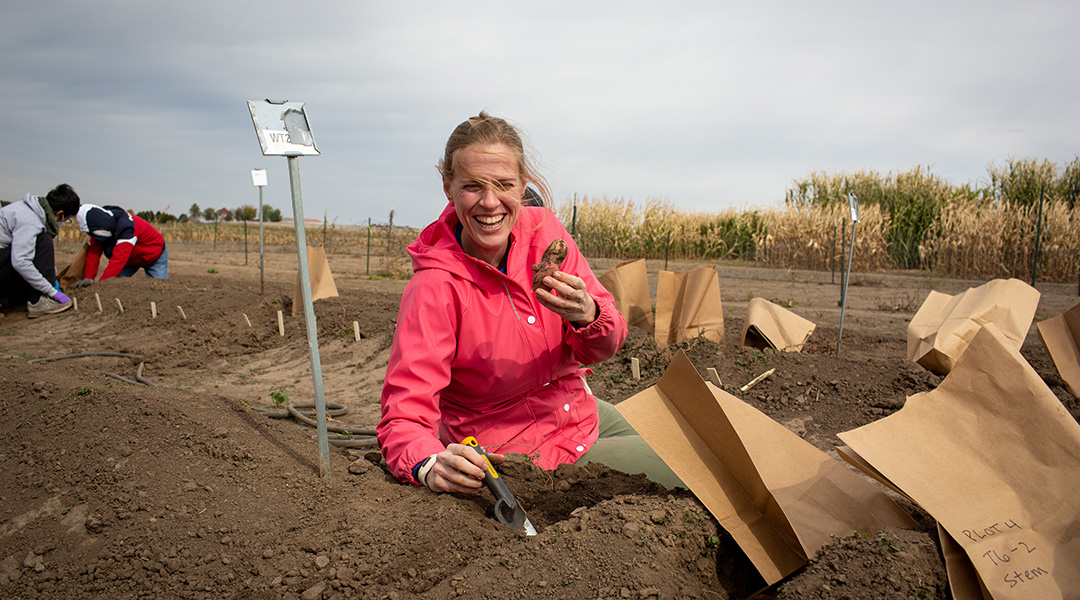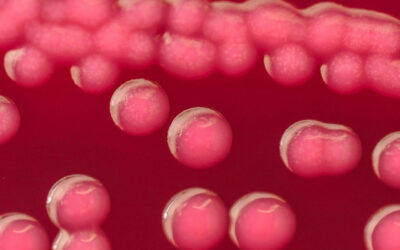Ensuring access to food is becoming more difficult in many parts of the world due, in large part, to the effects of climate change. Crop yields have plateaued in recent years and rising temperatures can make it more difficult for crops to thrive.
To overcome these challenges, scientists from the University of Illinois sought to “future proof” potatoes to resist the effects of climate change and boost crop yields amidst rising temperatures. Potatoes are a main food source for many regions of the world where climate change already affects growing seasons.
Past efforts to increase crop yields have included heavy use of nitrogen fertilizer, but this can have detrimental effects on the environment. This new research focuses on boosting the efficiency of photosynthesis, the process that plants use to transform sunlight, water, and carbon dioxide into energy for growth, to improve crop yields at higher temperatures.
“The reason we focus on photosynthesis is because we want to try to improve crop production without added inputs and without needing more land,” says Katherine Meacham-Hensold, a crop physiologist and scientific project manager at the University of Illinois.
Optimizing photosynthesis to increase crop yields
Meacham-Hensold’s team has been looking for ways to shortcut a process known as photorespiration that typically occurs alongside photosynthesis. During photorespiration, an enzyme involved in photosynthesis reacts with oxygen instead of carbon dioxide and generates a toxic byproduct. The plant must then remove this byproduct, which requires energy that could have been used for photosynthesis. Photorespiration occurs more often at higher temperatures so it was important to bypass this process to improve crop yields, particularly in the context of changing climates.
To do this, the team introduced two genes into potato plants to divert the plant away from photorespiration and enhance photosynthesis efficiency.
Next, they planted these enhanced potato plants to see how they would grow in the field. They focused on the edible part of the potato plant called the tuber and calculated the tuber biomass, or the weight of all tubers produced per plant. In 2020, the plants produced 10% more potatoes by weight. The team began another field trial in 2021, but their experiment was flooded and lost. They tried again in 2022 and found a 30% increase in tuber biomass. There were three heat waves early on in the potato’s growth phase that year, hinting that these plants were not only more heat tolerant, but thrived under these conditions.
“It’s kind of devastating when you lose a whole experiment. But had we not, we probably wouldn’t have done another field season in 2022,” Meacham-Hensold explains. “In 2022 we got those huge heat waves in early growth, which really gave us the 30% biomass increase in the potatoes.”
Field trials can be challenging because they take a lot of time and money, and you can’t predict what the weather will do. “The huge increase that we achieved that was driven by an early season heat stress was probably the biggest surprise of the work,” says Meacham-Hensold. “Serendipitiously, this was perhaps a good thing that the experiment flooded out in 2021.”
While increasing crop yield is important, it’s also crucial to ensure that the increased yield did not compromise the nutritional value of the potato. To address this possible concern, Meacham-Hensold’s team washed, dried, and ground up potatoes. Then they measured how much starch, protein, sugars, dietary fiber, minerals, and vitamins were in these potatoes compared to unmodified potatoes. They found that although the yield increased, the potato’s nutritional content wasn’t negatively impacted.
Translatability to other crops
Meacham-Hensold believes that her findings with potato plants could also increase crop yields in other plants. They’ve already shown that the bypass works in other plants, such as the tobacco plant, and have introduced the genes into soybean and have started field trials. “The two main crops that our project is really interested in are soybean and cowpea, because these are very important crops for Southeast Asia and Africa,” she says. “We already have the bypass in soy and field trials underway, but we expect the mechanism to behave similarly in both soybean and cowpea.” Additionally, cassava, a focus crop for African countries, could also be promising as it is another tuber crop.
Populations in these regions are most at risk for food insecurity, which is increasingly impacted by rising temperatures. “The focus of our work is to protect yield for people who use [these crops] as their major source of calorie,” says Meacham-Hensold. “We really need crops that are going to withstand temperature extremes.”
References:
Katherine Meacham-Hensold et al, Shortcutting Photorespiration Protects Potato Photosynthesis and Tuber Yield Against Heatwave Stress, Global Change Biology (2024). DOI: 10.1111/gcb.17595; Cavanagh et al, Alternative pathway to photorespiration protects growth and productivity at elevated temperatures in a model crop, Plant Biotechnology Journal (2021). DOI: 10.1111/pbi.13750
Feature image: Katherine Meacham-Hensold led research that showed engineering improvements in the photorespiratory bypass of potato led to increased tuber mass in heatwave conditions. Credit: RIPE project/Katherine Meacham-Hensold.

















